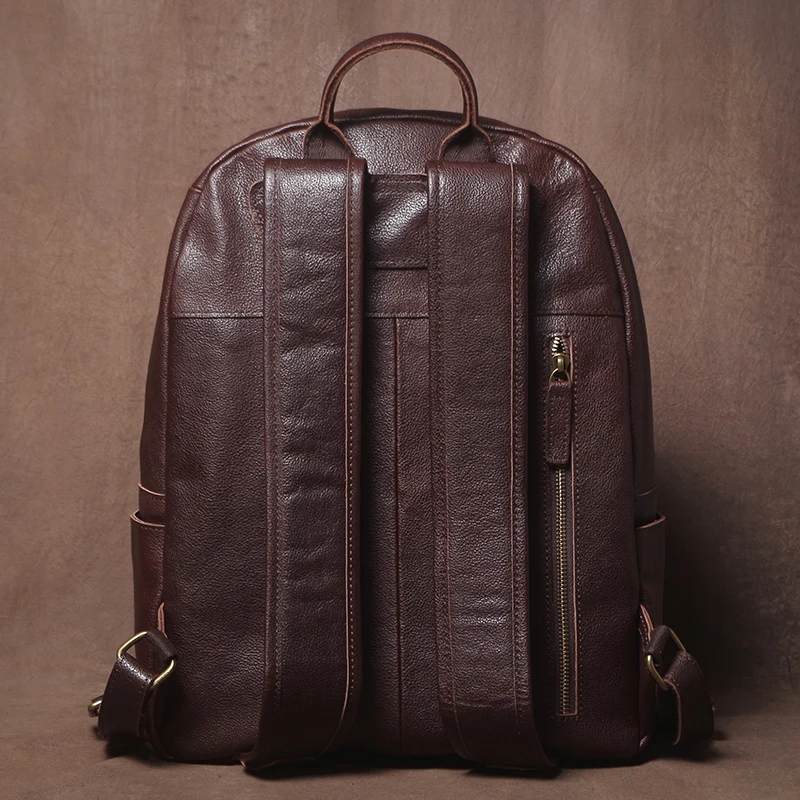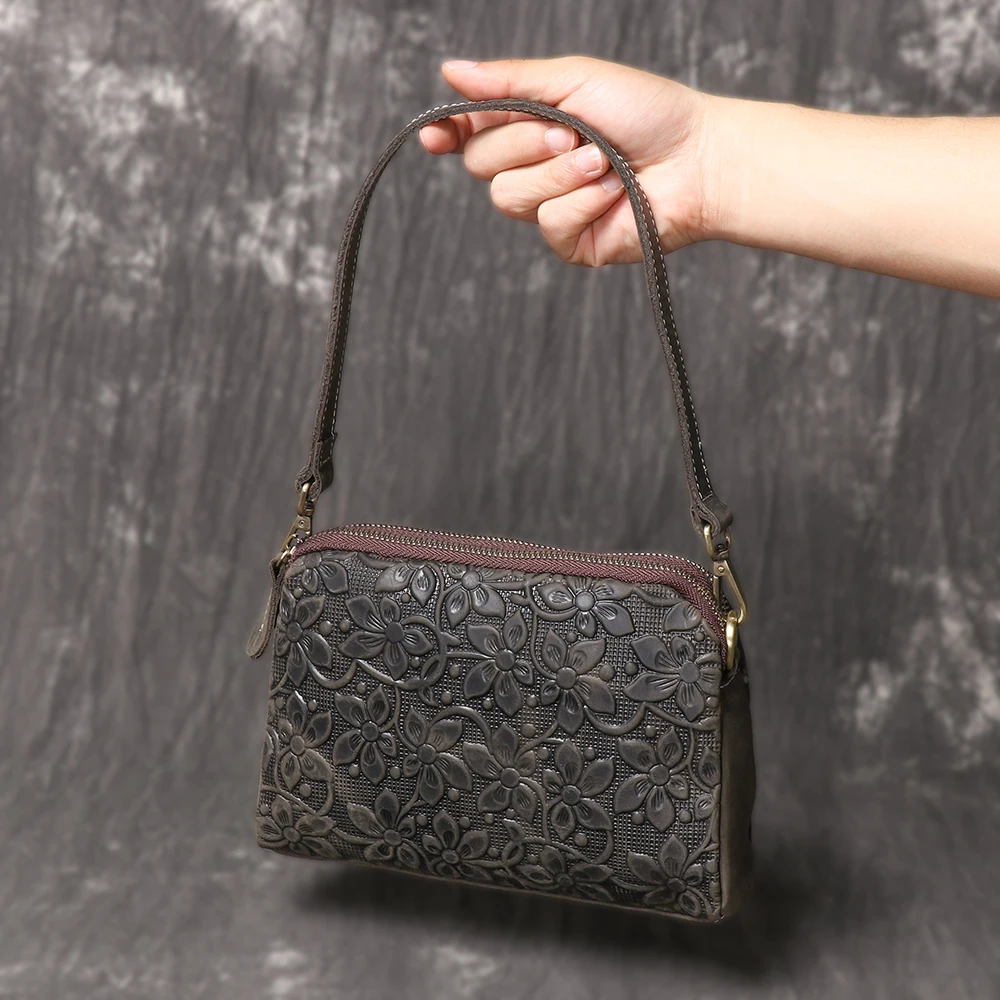Introduction
In today’s world, consumers are increasingly making choices that align with their environmental values. The fashion and accessories industry has seen a significant shift, with nearly 60% of consumers now considering sustainability when making purchases. Within this growing movement, “eco leather” has emerged as an important term that often leaves shoppers confused about what they’re actually buying.
Eco leather isn’t a single material but rather encompasses a spectrum of options—from environmentally conscious animal leather to innovative plant-based alternatives. As we navigate an era where sustainability matters more than ever, understanding these distinctions becomes crucial for making informed decisions.
The terminology can be particularly confusing because “eco leather” might refer to traditionally sourced leather processed with environmentally friendly methods, or it could indicate completely animal-free materials made from plants, fungi, or recycled components. For those who care about both quality and environmental impact, proper leather care and conditioning extends beyond just maintenance—it reflects a commitment to sustainable consumption through product longevity.
What is Eco Leather? Understanding the Different Types
Eco leather refers to leather and leather-like materials produced with environmental sustainability as a priority. This broad term encompasses two distinct categories that often get conflated in marketing materials:
Sustainably processed animal leather: Traditional leather that uses environmentally responsible tanning and production methods, focusing on reduced chemical use, water conservation, and ethical sourcing.
Plant-based and recycled alternatives: Materials that mimic the properties of leather but are derived from non-animal sources such as plants, fungi, recycled materials, or bio-based synthetics.
What makes this definition important is that both categories claim the “eco leather” label despite having fundamentally different compositions. The unifying principle is that both approaches aim to address the environmental problems associated with conventional leather production—namely high water usage, chemical pollution, and in some cases, concerns about animal welfare.
Understanding different grades of leather quality provides important context for evaluating how eco leather compares to traditional options. The distinction matters because each type offers different benefits, drawbacks, and environmental considerations that conscious consumers should weigh according to their values.
Sustainably Processed Animal Leather
Sustainably processed animal leather represents a more environmentally responsible approach to traditional leathermaking. The key difference lies in the processing methods rather than the source material itself.
Sustainable Tanning Processes
Vegetable tanning: Uses tannins extracted from tree bark, leaves, and other plant parts instead of chromium. This centuries-old method creates rich, natural tones that develop character over time.
Chrome-free tanning: Eliminates chromium compounds (particularly harmful chromium VI) that can contaminate waterways and pose health risks.
Reduced chemical processing: Minimizes the use of harsh chemicals, dyes, and finishes that contribute to pollution.
Water conservation represents another crucial aspect of sustainable leather processing. Modern eco-friendly tanneries implement:
- Closed-loop water systems that recycle up to 95% of production water
- Biological water treatment facilities that clean wastewater before release
- Reduced water consumption techniques throughout the processing chain
The Leather Working Group (LWG) provides the industry’s most recognized certification for sustainable leather. Their comprehensive audits assess environmental performance across energy use, waste management, water usage, traceability, and chemical management. Tanneries receive ratings from Gold to Audited based on their environmental performance.
The careful selection of materials and proper certification of eco-friendly leather ensures that full-grain leather backpacks and other quality products can maintain their premium characteristics while reducing environmental impact. The durability of properly produced sustainable leather means products last longer, creating less waste over time.
Plant-Based and Recycled Leather Alternatives
Plant-based and recycled leather alternatives represent innovative approaches to creating leather-like materials without using animal hides or with minimal new animal products. These materials typically fall into several categories:
Major Categories of Eco Leather Alternatives
Agricultural byproduct materials: Created from waste products of the food industry, like grape skins from wine production, apple peels, and pineapple leaves.
Mycelium/fungal-based materials: Grown from mushroom roots (mycelium) to create leather-like textures with minimal resources.
Recycled or bonded leather: Created from leather scraps and fibers bonded together with natural or synthetic binders.
Bio-based synthetics: Plant-derived polymers that replace petroleum-based plastics in traditional synthetic leather.
| Material | Source/Composition | Key Sustainability Features | Common Applications | Limitations |
|---|---|---|---|---|
| Piñatex | Pineapple leaf fibers | Uses agricultural waste, biodegradable backing options | Shoes, bags, furniture | Less water-resistant than leather |
| Mylo | Mycelium (mushroom roots) | Low resource use, minimal land required | Fashion accessories, luxury goods | Limited scaling currently |
| Apple leather | Apple industry waste | Repurposes food waste | Handbags, watch straps | Requires some synthetic binders |
| Recycled leather | Leather industry waste | Reduces landfill waste | Furniture, accessories | Less durable than virgin leather |
| Cork leather | Cork oak bark | Harvested without harming trees | Wallets, bags, footwear | Less flexible than animal leather |
| Cactus leather | Nopal cactus leaves | Minimal water use, no irrigation needed | Fashion items, automotive | Higher cost than synthetic options |
Success stories include major fashion brands incorporating Piñatex into footwear collections, luxury automakers using mushroom leather for interior components, and luxury leather backpack producers experimenting with cactus leather for premium accessories.

Environmental Benefits of Eco Leather
The environmental advantages of eco leather extend across several important areas:
Reduced chemical pollution: Both sustainable animal leather and plant alternatives significantly decrease harmful chemicals entering waterways. Vegetable tanning alone eliminates approximately 90% of the toxic chromium typically used in conventional leather processing.
Lower carbon footprint: Plant-based alternatives typically produce 80-95% less carbon emissions compared to conventional leather. Sustainably processed animal leather reduces carbon emissions by roughly 20-35% through efficient production methods.
Water conservation: Modern eco-tanning facilities use 30-50% less water than traditional methods. Plant-based alternatives like cactus leather require minimal irrigation, saving thousands of gallons per ton of material produced.
Waste reduction: Materials like Piñatex and apple leather repurpose agricultural waste that would otherwise be discarded. Recycled leather prevents leather scraps from entering landfills, where they decompose slowly and release methane.
Land use efficiency: Plant-based alternatives don’t require dedicated animal grazing land, reducing deforestation pressure and habitat destruction.
Biodegradability potential: Certain eco leather varieties break down more readily at end-of-life than conventional leather treated with preservative chemicals.
Proper conditioning of leather backpacks contributes to environmental sustainability by extending product lifespans, allowing quality eco leather goods to last for many years before needing replacement.
Limitations and Challenges of Eco Leather
Despite the environmental advantages, eco leather still faces several significant challenges:
Durability concerns: Many plant-based alternatives don’t match traditional leather’s longevity. Some bio-leather options may crack or wear more quickly, especially in high-stress applications like shoes or furniture.
Water resistance issues: Plant-based materials often provide less natural water resistance than animal leather, requiring additional treatments or coatings that may reduce their eco-friendly credentials.
Biodegradability trade-offs: Many “eco” leathers still incorporate synthetic components for durability and water resistance, limiting their biodegradability. Even those marketed as biodegradable often require specific industrial composting conditions rarely found in standard disposal systems.
Cost barriers: Sustainable leather production typically costs 15-30% more than conventional methods due to labor-intensive processes and smaller production scales. These costs inevitably transfer to consumers.
Inconsistent standards: No universal certification system exists specifically for “eco leather,” allowing for potential greenwashing and inconsistent claims across brands and products.
Performance limitations: Some plant-based alternatives lack the breathability of animal leather, an important functional property for footwear and certain accessories.
Similar to the way traditional leather has certain disadvantages of full-grain leather, eco leather alternatives must balance their environmental benefits against these practical limitations. Research continues to address these challenges, with promising developments in bio-based waterproofing and improved manufacturing techniques.
Eco Leather vs. Traditional Terms: Clearing the Confusion
The leather alternative landscape is filled with overlapping terminology that often creates confusion for consumers. Understanding the distinctions is crucial for making informed choices:
| Term | Definition | Environmental Impact | Animal Impact | Key Characteristics |
|---|---|---|---|---|
| Traditional Leather | Animal hide processed with chemicals | High water use, chemical pollution | Requires animal hides | Durable, breathable, develops patina |
| Eco Leather | Either sustainably processed animal leather OR plant-based alternatives | Lower impact than traditional (varies by type) | Varies (may or may not use animal products) | Properties vary by specific material |
| Vegan Leather | Any leather alternative not using animal products | Varies widely (can be petroleum-based or plant-based) | No animal products | Variable durability, often less breathable |
| PU Leather | Polyurethane coating on fabric base | Contains plastics, limited biodegradability | No animal products | Less expensive, consistent appearance |
| PVC Leather | Polyvinyl chloride-based synthetic | Contains plastics, poor biodegradability, toxic production | No animal products | Water-resistant, less expensive |
| Bonded Leather | Recycled leather fibers with binders | Reduces waste but uses adhesives | Contains some animal products | Less durable than full leather |
One common misunderstanding is assuming all vegan leather is environmentally friendly. Many vegan leathers are made from petroleum-based plastics with significant environmental footprints. Similarly, products labeled simply as “eco leather” without specifying the material composition may be misleading consumers about their true environmental impact.
When shopping for various leather backpacks, these distinctions become particularly important for aligning purchases with personal values regarding sustainability, animal welfare, and product performance.

How to Identify Genuine Eco Leather
Identifying truly sustainable eco leather requires looking beyond marketing claims. Here’s how to make informed assessments:
Look for specific material descriptions: Genuine eco leather products will clearly state their composition (e.g., “vegetable-tanned full-grain leather” or “Desserto cactus leather”) rather than vague terms like “eco-friendly” or “green.”
Recognize legitimate certifications:
- Leather Working Group (LWG) certification for animal leather
- OEKO-TEX Standard 100 for chemical safety
- Global Organic Textile Standard (GOTS) for organic components
Cradle to Cradle certification for circular design
Examine transparency levels: Brands committed to sustainability typically provide detailed information about their materials’ origins, processing methods, and environmental benefits.
Question vague claims: Be skeptical of products making broad environmental claims without specific details about materials or production processes.
Research the brand: Companies truly committed to sustainability often have comprehensive environmental policies that extend beyond a single “eco” product line.
Understanding how different eco leathers perform when exposed to the elements will help inform your purchase decisions. Many eco leathers require special consideration when it comes to waterproofing leather bags to maintain both their appearance and environmental benefits.
Caring for Eco Leather Products
Proper care extends the life of eco leather products, enhancing their sustainability through longevity:
General Care Guidelines for All Eco Leathers:
- Clean regularly with appropriate methods for your specific material
- Keep away from direct sunlight and extreme heat when not in use
- Allow wet items to dry naturally at room temperature
- Store in breathable dust bags or covers, not plastic
Material-Specific Care:
For vegetable-tanned leather:
* Use natural, wax-based conditioners without petroleum derivatives
* Apply leather balm every 3-6 months to maintain suppleness
* Embrace patina development as a natural aging process
For plant-based alternatives:
* Check manufacturer recommendations as care varies by material
* Use gentle, plant-based cleaning solutions
* Apply appropriate protectant sprays designed for synthetic materials
* Keep items filled with tissue when not in use to maintain shape
For recycled leather:
* Treat similar to regular leather but with gentler cleaning methods
* Be mindful of potential separation at seams or edges
* Use conditioners specifically formulated for bonded leather products
Proper maintenance greatly extends product lifespan, which is perhaps the most sustainable aspect of any material choice. Well-maintained vintage leather backpacks demonstrate how quality materials develop character over time while avoiding the environmental impact of frequent replacements.
Applications of Eco Leather in Modern Products
Eco leather has found its way into numerous product categories, showcasing its versatility and growing consumer appeal:
Fashion Accessories: Beyond standard applications like wallets and belts, eco leather now appears in luxury handbags, watch straps, and statement jewelry pieces. Many designers highlight the unique textures of materials like pineapple or cactus leather as desirable features rather than compromises.
Footwear Innovations: Athletic shoe companies have embraced mycelium leather for performance shoes, while luxury brands incorporate apple and wine leather into high-end footwear. These materials offer comparable comfort with reduced environmental impact.
Furniture and Home Goods: Sustainable animal leather and recycled leather options have become popular in upholstery, offering durability with eco-credentials. Decorative items like pillows and wall coverings increasingly feature plant-based alternatives.
Automotive Applications: Premium car manufacturers now offer eco leather options for vehicle interiors, responding to consumer demand for luxury experiences without environmental compromise.
Technology Accessories: Phone cases, laptop sleeves, and tablet covers made from sustainable materials provide protection with environmental benefits. These smaller accessories have become popular entry points for consumers exploring eco leather options.
The distinctive characteristics of traditional designs made with contemporary materials can be seen in many leather rucksack collections, where heritage styling meets modern sustainability.
14 Inch Leather Laptop Backpack, Brown Leather Backpack, Men's Leather Backpack, Vintage Leather Backpack
Price range: $177.28 through $199.12 Select options This product has multiple variants. The options may be chosen on the product pageCarry On Leather Backpack, Roll Top Leather Backpack
Price range: $77.76 through $96.48 Select options This product has multiple variants. The options may be chosen on the product pageDesigner Mini Backpack, Mini Leather Backpack, Small Leather Sling Backpack, Women's Leather Backpack
Price range: $95.76 through $98.80 Select options This product has multiple variants. The options may be chosen on the product pageDesigner Mini Backpack, Designer Women's Backpack, Mini Leather Backpack, Women's Leather Backpack
Price range: $135.92 through $137.64 Select options This product has multiple variants. The options may be chosen on the product pageBlack Leather Backpack, Small Leather Backpack, Women's Leather Backpack
Price range: $112.96 through $116.12 Select options This product has multiple variants. The options may be chosen on the product page- Price range: $80.72 through $108.04 Select options This product has multiple variants. The options may be chosen on the product page
Is Eco Leather Right for You? Factors to Consider
When deciding if eco leather aligns with your needs, several considerations can guide your choice:
What are your primary values?
If environmental impact is your main concern, plant-based alternatives generally have the lowest footprint, while sustainably processed animal leather offers a middle ground between traditional leather and synthetics. If durability is paramount, high-quality sustainable animal leather may serve you better for items facing daily wear.
How will you use the product?
For items requiring significant flexibility and strength (like bags carried daily), traditionally processed but sustainable leather often performs best. For accessories with less stress, plant-based alternatives can shine without compromising functionality.
Do you value patina and character development?
Vegetable-tanned animal leather develops a rich patina over time that many find appealing. Most plant-based alternatives maintain a more consistent appearance throughout their lifespan.
What’s your budget perspective?
While eco leathers generally cost more upfront, consider cost-per-use over time. A well-made sustainable leather item might last decades with proper care, potentially making it more economical than replacing lower-quality alternatives.
How much maintenance are you willing to perform?
Some eco leathers require specific care routines. If you prefer low-maintenance items, certain plant-based options with protective coatings might better suit your lifestyle than vegetable-tanned leather that needs regular conditioning.
Understanding whether oiling leather provides waterproofing and other maintenance aspects can influence which type of eco leather best fits your lifestyle and expectations.

The Future of Eco Leather Innovation
The eco leather landscape continues to evolve rapidly, with several promising developments on the horizon:
New biotechnology approaches are creating lab-grown collagen identical to animal collagen but without animal involvement. These materials promise to replicate leather’s performance characteristics perfectly while eliminating ethical concerns.
Advanced recycling technologies are improving the quality of recycled leather, addressing previous limitations in durability and flexibility. These processes break down leather waste more effectively before reconstituting it into new material with properties closer to virgin leather.
Plant science innovations are developing crop varieties specifically optimized for leather alternative production. These plants require less water, grow more quickly, and produce fibers with improved strength and texture.
Manufacturing improvements are reducing the need for synthetic binders and coatings in plant-based alternatives, moving toward fully biodegradable options that perform well in real-world conditions.
The industry is also seeing greater standardization of sustainability claims through emerging certification programs specifically for leather alternatives. These standards will help consumers make more informed choices as the market expands.
This evolution extends to the development of new leather waterproofing products that maintain eco-friendly credentials while improving performance.
FAQs About Eco Leather
Is eco leather real leather?
Some eco leather is made from animal hides processed sustainably, making it “real leather.” Other eco leathers are plant-based or synthetic alternatives that contain no animal products. Always check the specific material composition.
Is eco leather durable?
Durability varies widely by type. Sustainably processed animal leather maintains most of traditional leather’s durability. Plant-based alternatives range from quite durable (mushroom leather) to less durable (some fruit-based leathers), though manufacturing improvements continue to enhance performance.
How can I tell if a product uses genuine eco leather?
Look for specific material descriptions and credible certifications rather than vague “eco-friendly” claims. Reputable brands provide transparency about their materials’ composition and processing methods.
Is eco leather waterproof?
Most eco leathers are naturally water-resistant rather than waterproof. Sustainably processed animal leather maintains traditional leather’s water-resistant properties. Plant-based alternatives vary, with some requiring additional treatment for water resistance.
Is eco leather always vegan?
No. Eco leather includes both animal-derived leather processed sustainably (not vegan) and plant-based alternatives (vegan). Always check specific material descriptions if veganism is important to you.
Does eco leather develop a patina?
Vegetable-tanned eco leather develops a beautiful patina similar to traditional leather. Most plant-based and synthetic eco leathers maintain their original appearance without developing patina.
How does eco leather compare in price?
Eco leather typically costs 15-50% more than conventional options due to specialized processing, smaller production scales, and innovative materials. However, durability and longevity can make it more economical over time.
Is recycled leather actually sustainable?
Recycled leather reduces waste by repurposing scraps that would otherwise enter landfills. However, the bonding agents and processing required vary in environmental impact. Look for recycled leather with transparent information about all components used.







